The PM12M is a screened pentode for RF amplification. It is one of the early valves made with the anode as top cap connection, later types placed the control grid connection to the top cap for even greater separation of input and output circuits.This exhibit has a clear glass bulb whereas our other PM12M's have the characteristic Mullard gold colour zinc paint. One of the pair of filaments can be seen in the main image. Note the centre fixing so that the filament opens to maximum separation at the centre of the grid.The PM12V variable μ pentode was released in 1932, and was replaced by the PM12M in 1933. PM stands for Philips Mullard, the names of the companies.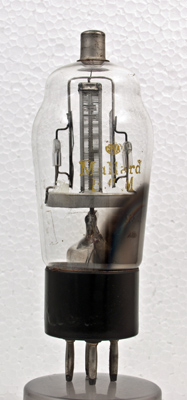
The construction features a full screening cage for g2 with two bright plates mounted either side of the centre structure as the anode.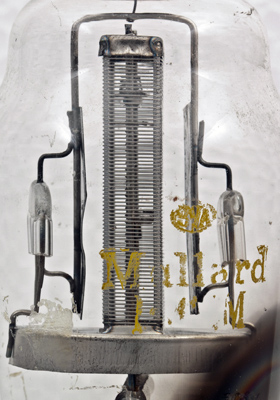
The same view but with more detail. The central filament spreader is a mica sheet.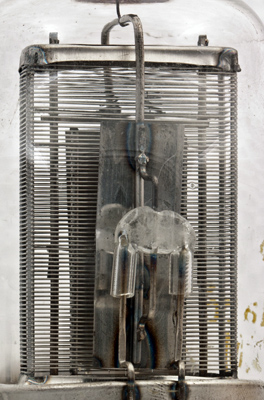
The screening cage extends to the top and bottom of the wire as bright sheets.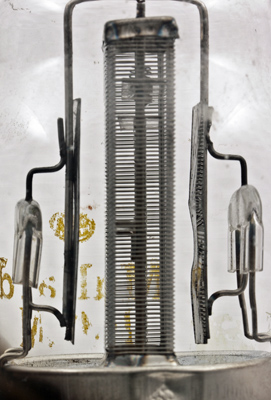
The anodes have a connecting support connected to the top cap and other supports attached to the screen disc via a glass insulator. It was clearly a rigid construction so as to avoid microphony.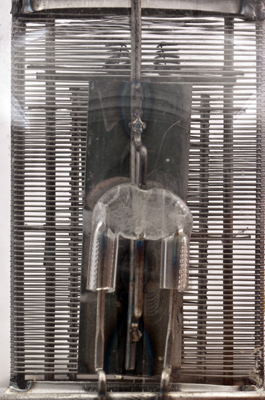
The inner vertical rods are the control grid fixings. The outer set of rods hold the mica supports for grid positioning and to support the filament.The metallised classic envelope is 45 mm in diameter and, excluding the B4 base pins, is 111 mm tall.References: Data-sheet, 1043 & 1040. Type PM12M was first introduced in 1933. See also 1933 adverts. |